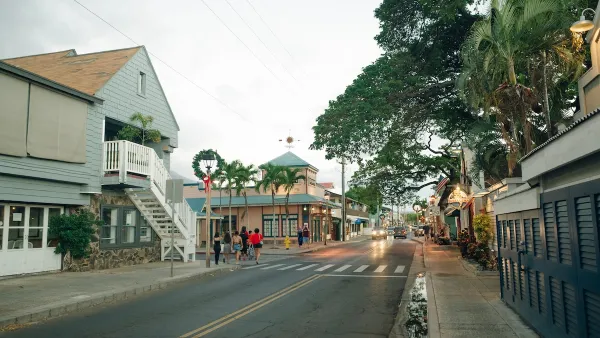As the effects of humans accelerate the changes occurring on the planet, landscape architects and planners alike will need to take into account ways that civilization can adapt to a lack of stability.
Brent Milligan writes a refreshingly accessible academic exploration of landscape migration—the process by which environments shift and change. Landscape migration is accelerated by the impacts of human civilization (as evidence of theAnthropoceneera) and landscape architects are beginning to "focus their practice on designing for adaption to change," as Milligan describes it.
Milligan opens the essay up by acknowledging that the commonly accepted definition of the word migration is too small—pertaining only to the movement of humans and animals.
The problem with that definition, according to Milligan: "We know that environmental conditions are always changing, but we allow ourselves the fiction of background stability. When we limit our thinking in this way, our political and design responses are circumscribed. (Allot water rights. Designate a wildlife refuge. Build a wall.) Not surprisingly, they often fail."
With a new definition of migration in place (i.e., " patterned movement across space and time"), Milligan examines several case studies for the implication of this to landscape architecture practice. Case studies include the Klamath River in Oregon and California and the salmon habitat destroyed by engineering of the river for water supply, the "Sand Engine" in Buckhorn City in the Rotterdam-Hague region of the Netherlands, the migration of the Mississippi River throughout the Mississippi Basin, and shrinking cities such as Detroit.
FULL STORY: Landscape Migration

Analysis: Cybertruck Fatality Rate Far Exceeds That of Ford Pinto
The Tesla Cybertruck was recalled seven times last year.

National Parks Layoffs Will Cause Communities to Lose Billions
Thousands of essential park workers were laid off this week, just before the busy spring break season.

Retro-silient?: America’s First “Eco-burb,” The Woodlands Turns 50
A master-planned community north of Houston offers lessons on green infrastructure and resilient design, but falls short of its founder’s lofty affordability and walkability goals.

Test News Post 1
This is a summary

Analysis: Cybertruck Fatality Rate Far Exceeds That of Ford Pinto
The Tesla Cybertruck was recalled seven times last year.

Test News Headline 46
Test for the image on the front page.
Urban Design for Planners 1: Software Tools
This six-course series explores essential urban design concepts using open source software and equips planners with the tools they need to participate fully in the urban design process.
Planning for Universal Design
Learn the tools for implementing Universal Design in planning regulations.
EMC Planning Group, Inc.
Planetizen
Planetizen
Mpact (formerly Rail~Volution)
Great Falls Development Authority, Inc.
HUDs Office of Policy Development and Research
NYU Wagner Graduate School of Public Service




























